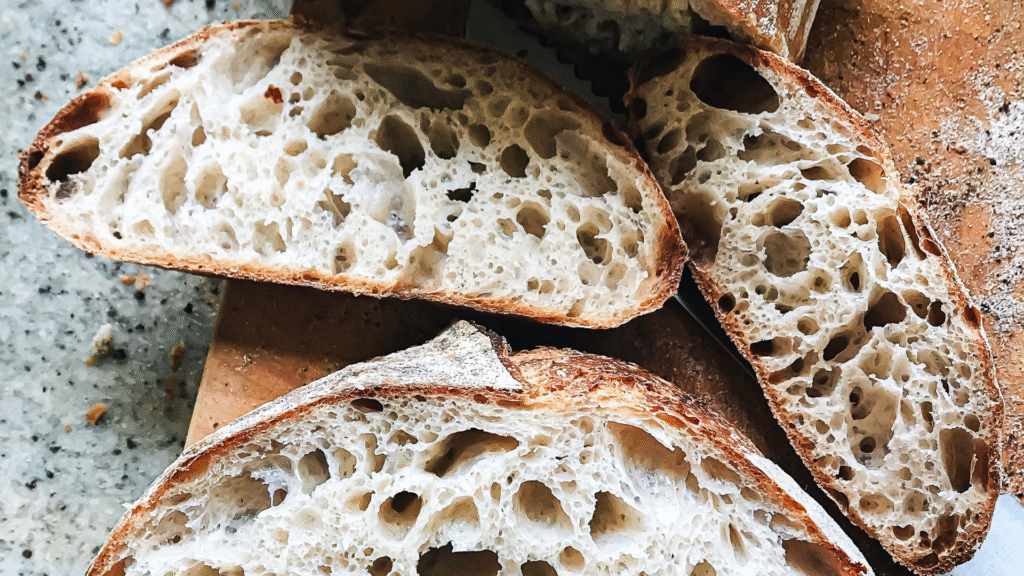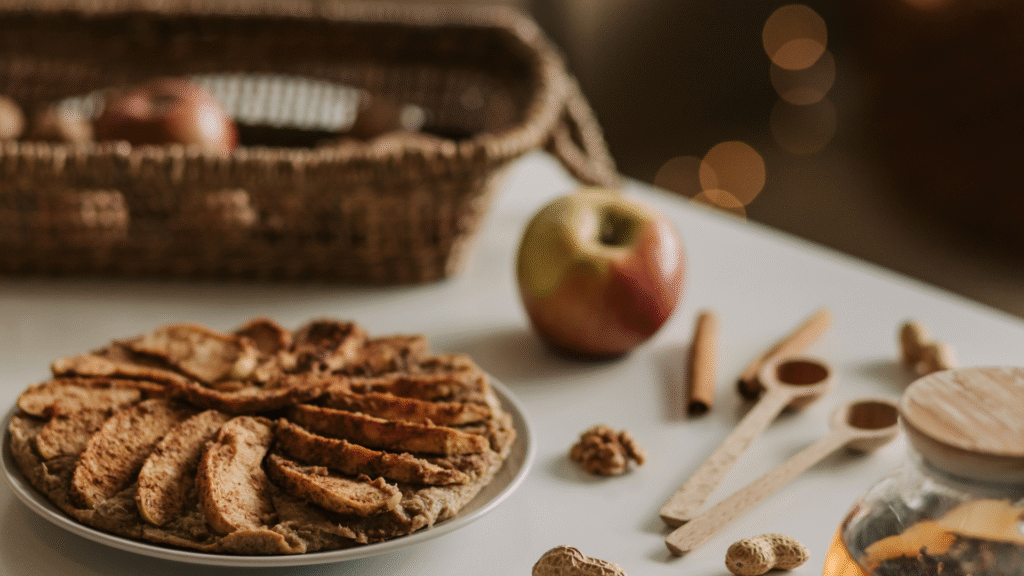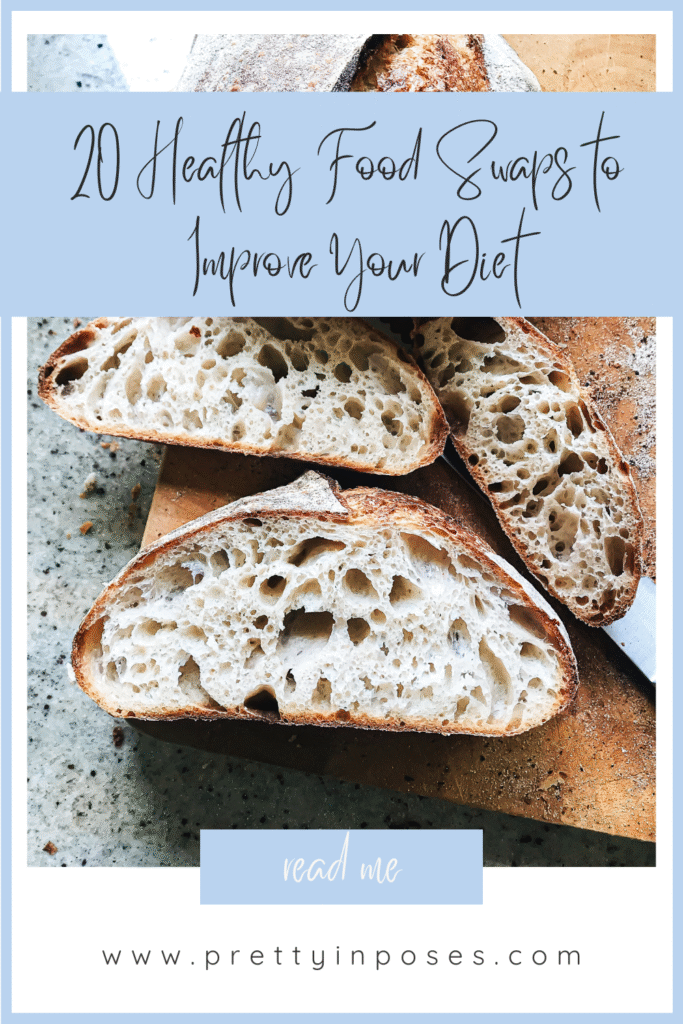This post discusses 20 healthy food swaps to improve your diet.
Sometimes, just the thought of eating healthier can cause people to break out in hives as they scour the internet for recipes and meal prep tips.
But there’s no need to overhaul your entire meal plan. In fact, it’s far easier to just swap out different sections of your plate for better options.
That’s why in this post, we’re exploring twenty healthy food swaps to help you improve your diet and enjoy meals guilt-free!
Why Healthy Food Swaps Are Easier Than Diets
Diets can be overwhelming since they often turn eating into a zero-sum game, forcing you to cut out all your favorite foods.
This level of restriction can make eating feel complicated and leave you either avoiding meals altogether or giving in to you’re cravings.
Food swapping allows you to upgrade your diet naturally, one small step at a time.
This is often a cheaper approach and prevents the need to eliminate foods or learn new recipes.
If you like the swap, you can keep it and move on to another section of your plate, or try a different option.
It puts the control entirely in your hands, which builds good eating habits and makes it a sustainable practice for healthier living.
10 Healthy Everyday Food Swaps
This post will be divided into two parts. The first ten suggestions are everyday substitutions that you can use throughout the week.
The next ten will be for holiday use. So, without further ado, here are ten healthy food swaps.

White Rice for Brown Rice or Quinoa
Let’s be honest, white rice is a common staple in many homes, but it may not be your best option if you’re looking to eat healthier.
During processing, white rice is stripped of most of its minerals and fiber, leaving it with little nutritional value.
Brown rice—and quinoa for that matter—still retain the bran and germ of their wheat kernel.
This provides you with more fiber, protein, and minerals, which aid in digestion and help preserve energy.
Sugary Breakfast Cereal for Oatmeal
Cereal is an extremely convenient food source, particularly in the morning for those who have a large family.
However, many brands often contain large amounts of added sugar with very little nutrition.
This can lead to sugar highs and crashes, which may wreak havoc on your blood sugar and energy levels.
Another convenient alternative to cereal is oatmeal. It’s rich in fiber to help digestion, and because it’s considered a whole grain, it can actually keep your blood sugar stable.
And if you miss the sweetness of store-bought cereals, try adding a bit of fruit or spice like cinnamon to give it a natural sweetness and antioxidant boost.
Soda for Sugar-Free Sparkling Water
Anyone who has ever tried soda knows how irresistible this carbonated, sweetened liquid can be. But as delicious as it is, soda also has many flaws.
It’s high in sugar, high in calories, high in acidity, and low in nutritional value.
Drinking too much of it can lead to the development of type 2 diabetes, heart disease, obesity, and tooth decay. Instead of soda, a fine substitute would be sugar-free sparkling water.
You’ll get the same level of sharp carbonation without the sugar and chemicals. Plus, you’re still drinking water.
You can try a naturally flavored sparkling water (sugar-free) or toss in a few fruit slices like lemon or berries for a bit of sweetness.
White Bread for Whole Grain Bread
Another household staple would be white bread—a super convenient, quick, and tasty food.
However, much like white rice, white bread loses its bran and germ, causing it to spike your blood sugar without any nutritional support.
It’s one reason you may still feel hunger or energy crashes after eating it.
On the other hand, whole-grain bread provides all the protein, minerals, and B vitamins that its counterpart does not. This healthy swap can improve digestion and boost heart health.
Sour Cream for Greek Yogurt
Sour cream is one of the first items on the list that isn’t half bad.
It gives you a good source of calcium, contains probiotics, and is rich in fat-soluble vitamins. All of which can boost bone health, promote better digestion, and support a healthy immune system.
With that said, it’s also high in saturated fat, high in calories, and contains lactose—a sugar found in dairy—which may cause issues for those with lactose intolerance.
Alternatively, Greek yogurt is often higher in protein and lower in fat, but still creamy. Given its similar taste, Greek yogurt can be substituted in all the ways you’d use sour cream.
It’s also rich in probiotics, so your gut will thank you. If dairy is still a problem, vegan Greek yogurt can be a good option, though it may not be as high in protein or nutrients.
Regular Pasta for Whole Grain or Chickpea Pasta
Much like its counterparts, white bread and white rice, regular pasta is also stripped of its bran and germ in the refining process.
So, it tends to be lower in protein, fiber, and minerals than whole-grain and chickpea alternatives. Thus, your blood sugar could spike after eating pasta, leading to the crash mentioned earlier.
Due to the lack of fiber and protein, you may not be as full after eating and may overeat as a result.
Whole-grain pasta is high in fiber, provides more minerals, and helps balance blood sugar levels—keeping you fuller longer.
Similarly, chickpeas have many of the same benefits and are high in protein.
Potato Chips for Air-Popped Popcorn
Chips are almost unbelievably delicious and provide a satisfying crunch. However, they’re also high in fat, calories, and sodium.
They contain very little protein and even less fiber, though made from potatoes. Alternatively, air-popped popcorn is a whole grain with minimal fat, low calories, and low sodium.
Additionally, it contains a moderate amount of protein and is an excellent source of fiber.
Ice Cream for Nice Cream
Ice cream is the summer dessert of choice, and it’s easy to see why.
It’s cold, delicious, and refreshing—but it’s loaded with saturated fat, sugar, and calories. It may also be difficult for people with lactose intolerance to digest.
Another option could be something called “nice cream,” which is a fruit-based, dairy-free option with a texture similar to soft-serve ice cream.
It’s higher in nutrients, lower in calories, and contains no added sugar since it’s naturally sweetened.
Butter for Olive Oil
Butter is used in many recipes and toppings because it improves the texture and taste of foods. Because butter is dairy, it does contain some vitamins like A, D, and K2.
The issue is that it’s filled with saturated fat, which can raise “bad” LDL cholesterol.
Olive oil, however, is high in heart-healthy monounsaturated fats, rich in antioxidants, and a source of vitamin E.
It also has no cholesterol, making it a great substitute for butter.
Store-Bought Salad Dressing for Tahini Sauce
Salad dressing often makes it easier to eat your greens; however, store-bought dressing tends to have fewer healthy fats, fewer nutrients, and more added sugar, sodium, and preservatives.
Tahini is a Middle Eastern and Mediterranean condiment that’s rich in healthy monounsaturated and polyunsaturated fats.
It’s a huge source of plant-based protein, fiber, and vitamins.
It can be made without preservatives or additives, and it has healthy fats that help you absorb fat-soluble vitamins from the vegetables in your salad.
10 Healthier Thanksgiving Swaps
Of course, we couldn’t write a food swap post without including a holiday that’s literally known for its food—Thanksgiving.
Below, we’re going to tackle fan-favorite meals and replace them with healthier yet still satisfying versions. So, here we go!

Mashed Potatoes with Butter for Mashed Cauliflower
Mashed potatoes are undoubtedly one of the most traditional and delicious comfort foods there is. The catch is, they tend to be higher in calories and carbs while spiking blood sugar.
On top of that, despite potatoes being a root vegetable, this dish has very little nutrient output.
In comparison, cauliflower is lower in calories and carbs and contains more antioxidants and vitamins like C and K.
Mashed cauliflower can be quite similar in taste and texture to this classic dish.
Stuffing with White Bread for Whole-grain
When you think of Thanksgiving, stuffing is definitely one of the dishes that comes to mind.
While a savory addition to the dinner table, the white bread often used in this recipe could be swapped out for a healthier option.
As mentioned earlier, white bread can spike blood sugar, making you less full and possibly increasing your risk of developing chronic health conditions over time.
Replacing it with its more nutritious counterpart—whole grain—will not only make your meal healthier but also add richer flavor and a more robust texture.
Candied Yams for Roasted Sweet Potatoes with Cinnamon
Fun fact: Candied “yams” sold in the U.S. are actually not yams at all but a softer and sweeter version of sweet potatoes.
And though they may taste good, they’re a high-calorie food filled with sugar and butter. This counteracts any nutritional benefit you would get from the sweet potato.
Instead, try switching this out for the actual vegetable. Sweet potatoes are rich in fiber, potassium, manganese, and vitamins A and C.
This option is so healthy that it supports digestion and keeps you satisfied after eating. If you want more sweetness, sprinkle a spice like cinnamon on top.
Cinnamon is an incredible antioxidant that can help fight inflammation and regulate blood sugar.
Mac and Cheese for Whole-Wheat Pasta with Reduced Cheese
Yet another staple on Thanksgiving is macaroni and cheese—perhaps the comfort food to end all comfort foods.
But there are a couple of concerns about this dish that shouldn’t be overlooked.
Traditional mac and cheese uses regular pasta noodles, which, as stated, are low in fiber and nutrients and can spike blood sugar.
Swapping these noodles out for whole-wheat pasta is a better choice. It’s higher in fiber, nutrient-dense, and helps control blood sugar.
The second issue is the cheese, particularly full-fat varieties, which are high in sodium, calories, and saturated fat.
Some studies suggest diets high in saturated fat can contribute to type 2 diabetes.
Alternatively, switching to a reduced-fat or low-fat cheese option like ricotta or mozzarella will likely provide less saturated fat and sodium.
Honey-Glazed Ham for Lean Turkey (Skinless)
This swap might break some hearts because honey-glazed ham is one of the most savory, succulent dishes in the world.
Unfortunately, ham is high in fat, calories, and sodium. It’s also loaded with sugar and has less protein than its counterpart.
Turkey, in comparison, is generally lower in fat, calories, sodium, and sugar, while being higher in protein.
However, the type of turkey and how it’s prepared greatly affect its benefits. A home-cooked, lean turkey that’s fresh, roasted, and skinless will provide the healthiest option.
Cornbread for Oatmeal Cornbread
What’s Thanksgiving without cornbread? There’s something about this warm, sweet comfort food that makes it the perfect side dish.
However, cornbread is made with refined white flour and spikes your blood sugar.
And although it’s often enriched with iron and B vitamins, it’s still deficient in fiber and other nutrients.
Oat flour, in contrast, is nutrient-dense and high in fiber, which supports digestion, lowers cholesterol, and keeps you feeling full.
The fiber also slows digestion, improving blood sugar control.
Cheese Ball for Hummus Platter
Cheese ball is another classic holiday appetizer, made with different cheeses and often served with crackers.
As tasty as it is, this dish is high in calories, saturated fat, and sodium. It also lacks fiber and nutrients.
Hummus, alternatively, is made from chickpeas, tahini, and olive oil—traditionally served with vegetables, whole-wheat bread, or crackers.
It’s higher in fiber, plant-based protein, and micronutrients like potassium.
Filled with good fats, hummus is a heart-healthy snack that improves digestion, regulates blood pressure, and supports weight management.
Pecan Pie for Maple Pecan Bites
Is it really the holidays without pecan pie? Some would say no, and it’s easy to see why—with its crunchy pecans, buttery crust, and syrupy sweetness.
But this dessert is loaded with sugar, fat, and calories. In fact, a single slice can contain 500 calories! It also has minimal fiber, so it’s not great for your blood sugar.
For a healthier option that still provides that pecan crunch, opt for pecan bites. These have much more fiber because they’re made from nuts, dates, and oats.
They’re filled with heart-healthy fats, including monounsaturated and polyunsaturated fats.
They’re sweetened naturally by dates with a touch of maple syrup—and because they’re bite-sized, portion control is easier.
Eggnog for Almond Milk “Nog”
Although eggnog is the preferred drink of Christmas, it’s often the beverage that signals the start of the holiday season—including Thanksgiving.
But traditionally, eggnog contains an excess of sugar, saturated fat, and calories. A healthier alternative is to make your own eggnog from almond milk.
It has far fewer calories, saturated fat, and sugar. Not to mention, it’s dairy-free and ideal for those with lactose intolerance.
If you try this swap, make it at home so you can control the ingredients. Some store-bought alternatives may contain chemical thickeners.
Packaged Gravy for Homemade Gravy
Gravy is that one addition to your plate that’s hard to skip—it just completes the meal.
But if it’s packaged, it can contain a range of processed ingredients like artificial flavors, thickeners, and other chemicals.
It’s also usually high in sodium, unhealthy fats, and additives.
This doesn’t mean you have to give up gravy—instead, make a homemade version with only a few ingredients like turkey broth and flour.
You’ll get the same thickness as commercial gravy but with less salt, fat, and additives.
Feast Smarter, Not Harder
Diets suck, and they rarely work. Food swapping is not only easier, but it also gives you more control over your meals without sacrificing taste or disrupting your lifestyle.
Hopefully, you found some benefit in this post. Remember, your journey to a happier, healthier you doesn’t need to happen all at once, nor does it need to resemble anyone else’s.
If you have any questions or comments, leave them below or send me a message through the contact page.
Don’t forget to sign up for the email list to stay updated on the latest posts—you’ll even get a free fitness guide when you sign up through the pop-up form. Happy food swapping!







Leave a Reply